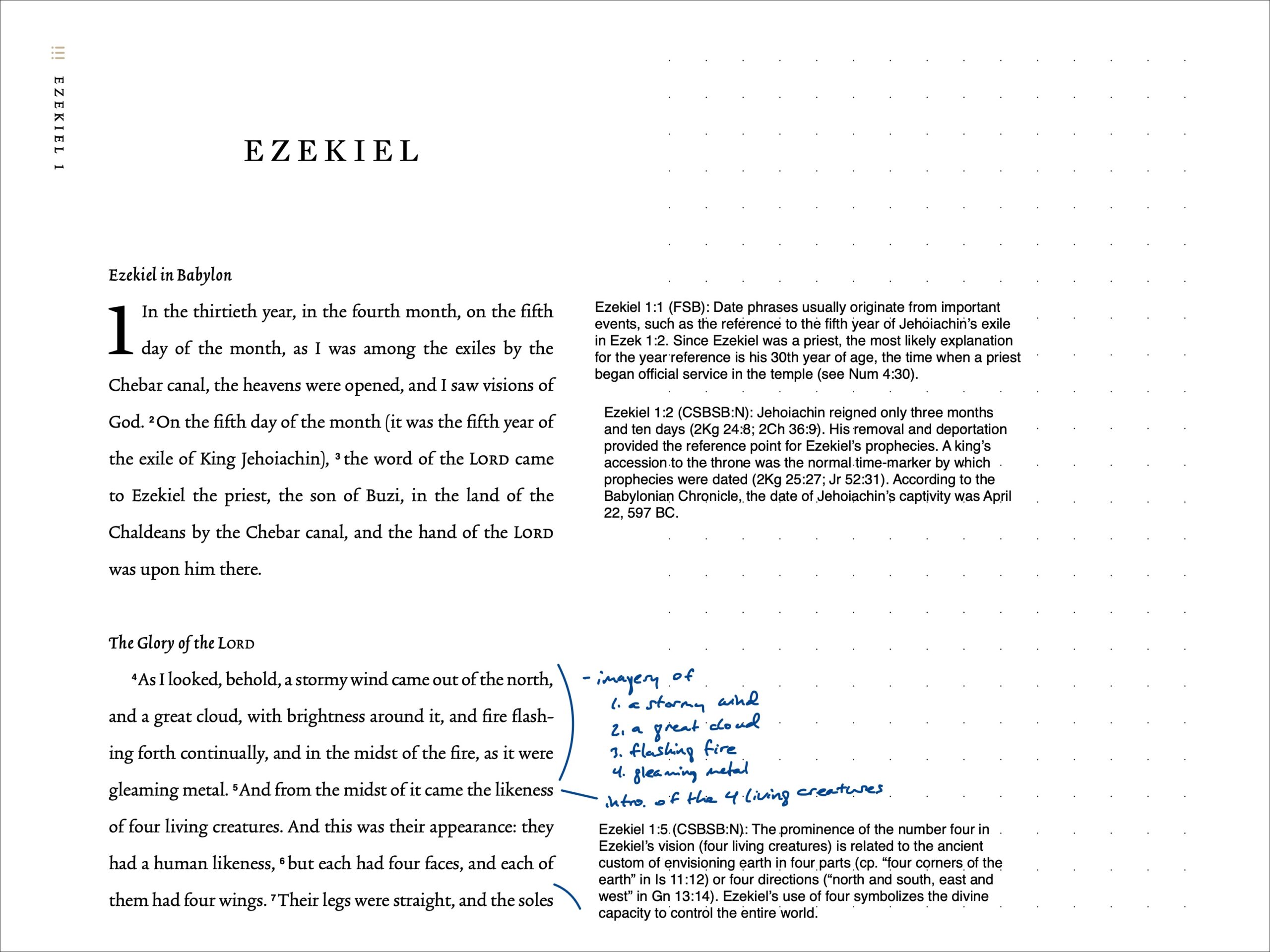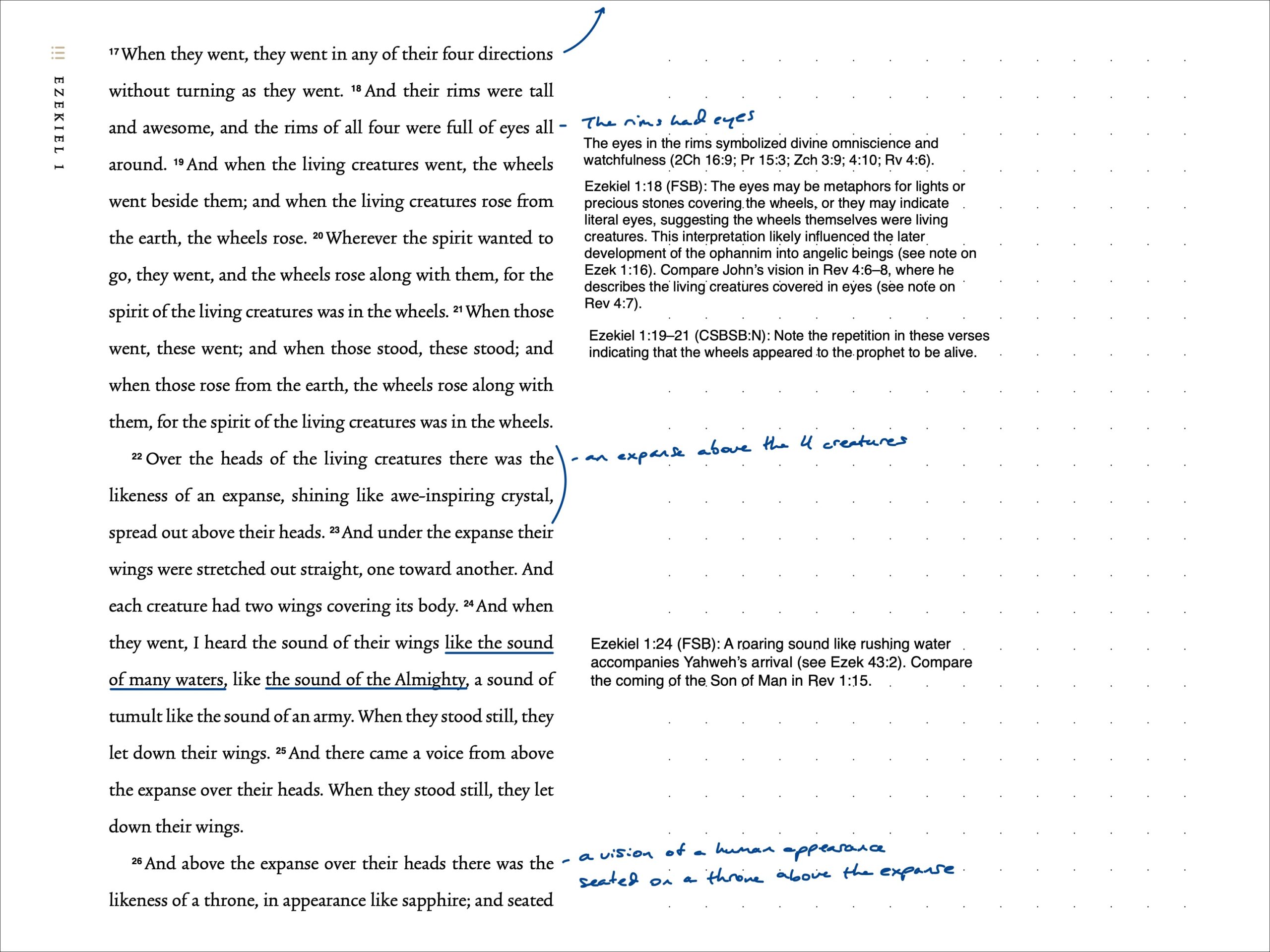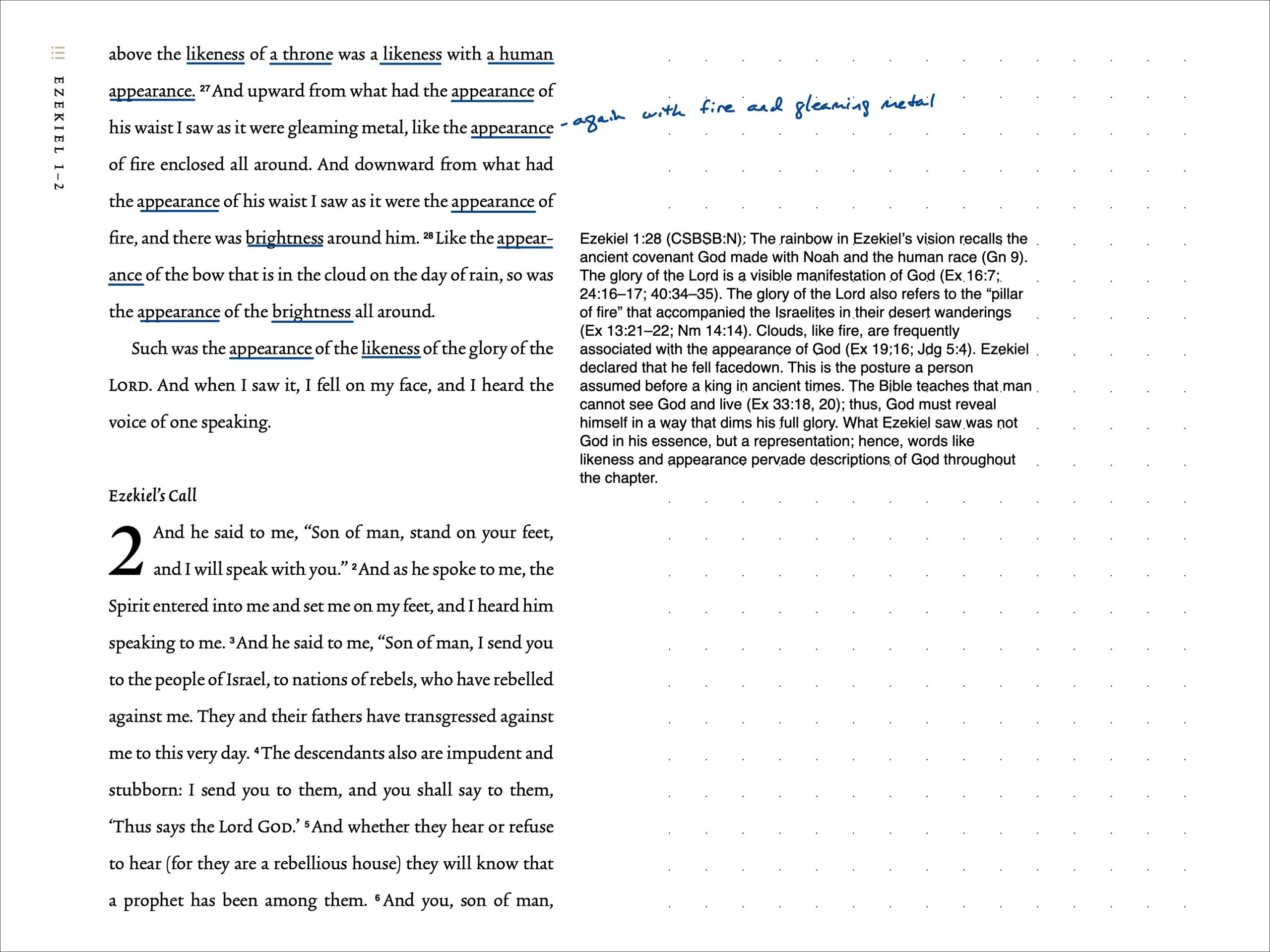| Date | Version | Reading Plan |
|---|---|---|
| @August 21, 2023 | ESV (2016) | ESV Prophets Plan 2023 |
Pericopes
- Item
Notes
The book of Ezekiel (”God is Strong”) is a series of oracles received by the priest Ezekiel, son of Buzi, who began to prophecy in Babylon in the fifth year of Jehoiachin’s exile around 593 BC. The entire book is dated according to the reign of Jehoiachin and covers the years from about 593 through 570 BC
The chapter opens with the context of the writing, “In the thirteenth year, in the fourth month, on the fifth day of the month”. Date phrases usually originate from important events. Since Ezekiel was a priest, the most likely explanation for the reference is his 30th year of age, the time when a priest began official service in the temple (see Num. 4:30).
Ezek. 1:4 describes Ezekiel’s vision of a “stomy wind” that “came out of the north”. Vivid imagery is used to compare it to “fire flashing forth” and “as it were gleaming metal”.
Ezek. 1:5-11 is a depiction of Ezekiel’s vision of four creatures, each with “a human likeness” with “four faces” and “four wings”. The prominence of the number four here for the creatures of Ezekiel’s vision is related to the ancient custom of envisioning earth in four parts (ex. “four corners of the earth” in Isaiah 11:12) or four directions (see Gen. 13:14). Ezekiel’s use of four symbolizes the divine capacity to control the world.
Ezek. 1:12-14 details the movement of the creatures and how they were entirely obedient to the spirit. The Hebrew word used here, ruach, seems to refer to an external spirit or force directing the movements of the four creatures. The word often refers to the Spirit of God and may refer to the empowering of the Holy Spirit (see Ezek. 3:12).
Ezek. 1:15-21 transitions to Ezekiel’s vision of the wheels “beside the living creatures”. The wheels were built in such a way that allowed the chariot to move in any direction (Ezek. 1:15-17). There are conflicting interpretations of what the wheels represent. The CSB notes say that they symbolized omniscience and watchfulness while the FSB notes suggest that they may be metaphors for lights or precious stones, or literal eyes or that the wheels themselves were living creatures.
Ezek. 1:22-25 is Ezekiel’s description of the expanse above the heads of the living creatures and of the creatures’ movement. The expanse was like “awe-inspiring crystal” spread out above their heads and when Ezekiel heard the creatures move their wings, it was “like the sound of many waters” and “the sound of the Almighty” (compare the coming of the Son of Man in Rev. 1:15).
The remainder of the chapter (Ezek. 1:26-28) is of Ezekiel’s vision of a human appearance seated on a throne above the expanse. The words “appearance” and “likeness” are heavily repeated in this section. In Ezek. 1:28, Ezekiel describes the brightness all around like “the bow that is in the cloud on the day of rain”. This recalls the ancient covenant God made with Noah and the human race in Gen. 9. Clouds (much like fire) are frequently associated with the appearance of God (Ezek. 19:16; Judges 5:4). Overwhelmed by this imagery, Ezekiel fell facedown, assuming the posture a person would have ancient times if they were in the presence of a king.
Application
The book of Ezekiel dives right in with striking visions of four-headed creatures, shining expanses and wheels with eyes. As with other books of the Bible, there are conflicting interpretations of these visions, but they no doubt inspire feelings of awe, even if it is by way of confusing and bizarre imagery. In the closing section of the chapter, Ezekiel himself was overcome by it all and responded by falling on his face, thus capturing something important for us as modern day readers.
God is overwhelming and incomprehensible. His glory and magnitude far exceed anything we are capable of processing. Confronted with His all-encompassing nature, our eyes dart around frantically, meager in our efforts to take it all in. Much like Ezekiel, our response should be of humility in the presence of our King, acutely aware of His greatness and our limitations. And yet, this same God of resplendent majesty chose to condescend to earth as a humble Servant. He took on flesh, allowing humanity to literally touch the Lord of all creation. What an amazing thing to consider!
Scripture Journal Notes
Commentaries & Resources Used
- ESV Study Bible. (Wheaton, IL: Crossway, 2008)
- Faithlife Study Bible (Lexham Press, 2016)
- Believer’s Bible Commentary (Thomas Nelson, 2016)
- CSB Study Bible Notes (Holman Bible Publishers, 2017)
- Matthew Henry’s Commentary on the Whole Bible (Guardian Press, 1976)
- The Bible: A Reader’s Guide (Sterling Publishing, 2011)
- The Infographic Bible (Zondervan, 2018)
- ESV Digital Scripture Journal (Crossway, 2019)



